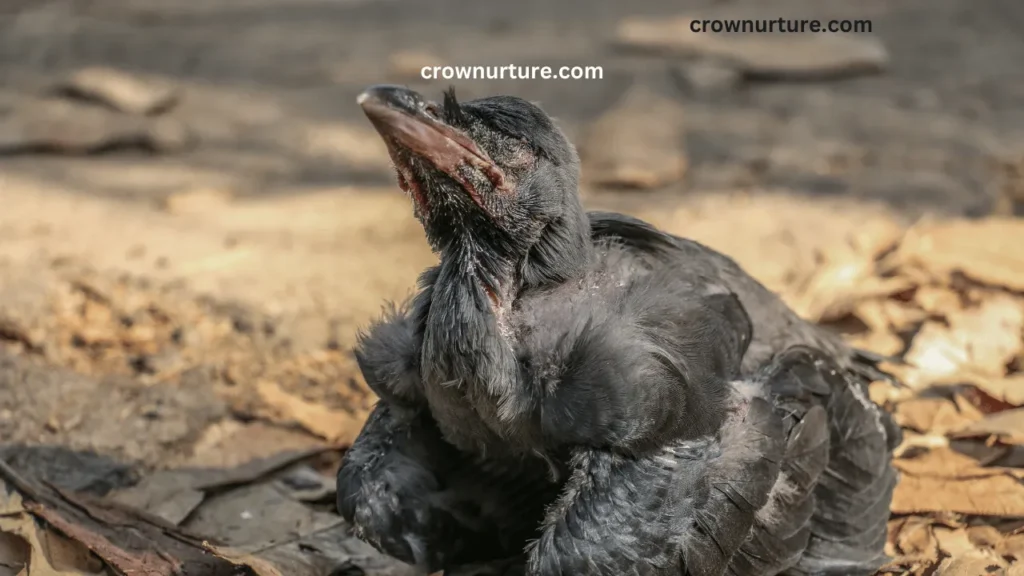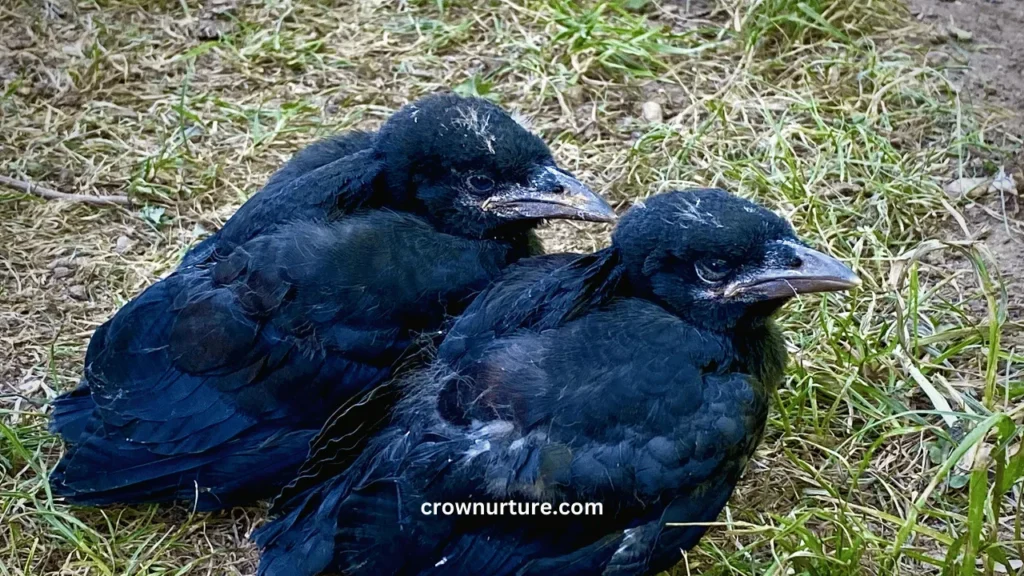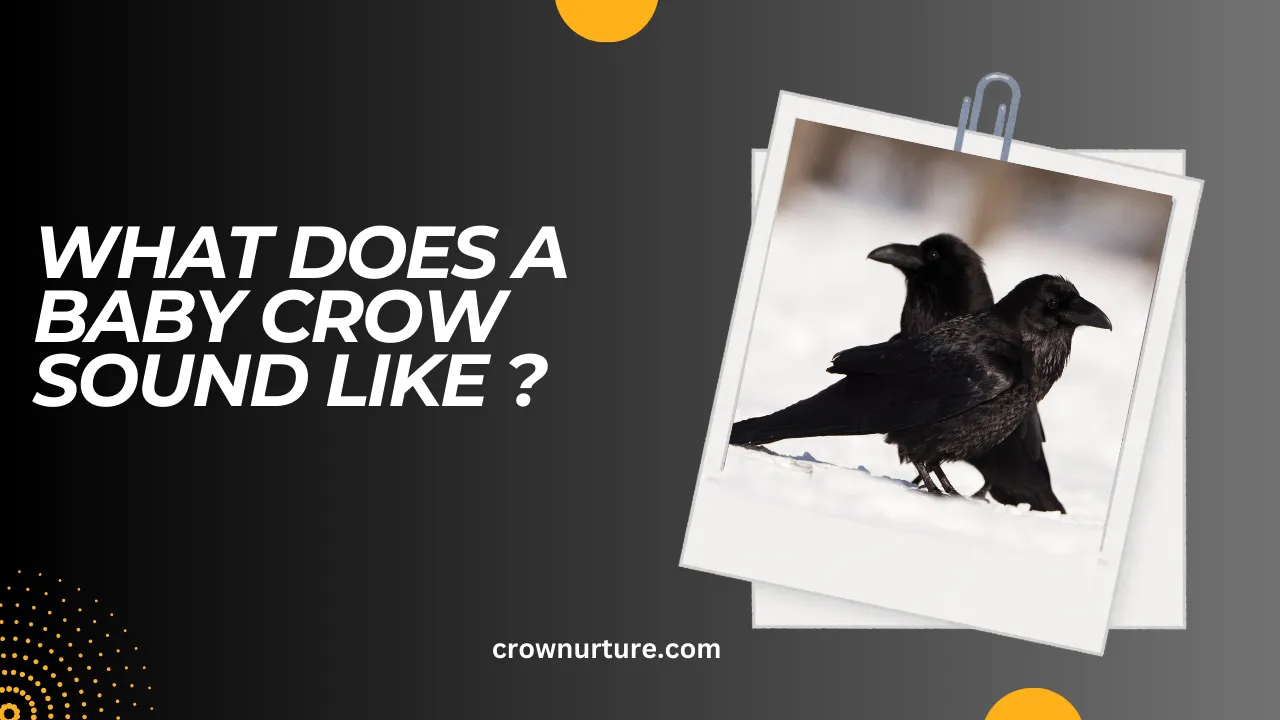The soundscape of nature is a symphony of calls, chirps, and songs, each with its purpose. Among these, the vocalizations of baby crows are particularly intriguing, offering a unique glimpse into their early lives.
These sounds are not just random noises; they are purposeful, serving as a lifeline between vulnerable chicks and their attentive parents. Understanding these calls can reveal fascinating details about the behavior, needs, and survival strategies of baby crows.
Baby crows, like their adult counterparts, are incredibly social and intelligent. Their vocalizations vary significantly depending on their developmental stage and immediate needs.
From hunger cries that demand attention to softer contact calls that help them stay connected to their family, these sounds are a vital part of their communication. Learning to identify these calls can be rewarding, whether you’re a birdwatcher, a wildlife enthusiast, or simply curious about the world around you.
This article takes you on a journey into the world of baby crows, exploring their unique vocal repertoire and the factors influencing their sounds. We’ll break down the life stages of crows, describe the sounds they make at each stage, and provide insights into what these calls mean.
Along the way, you’ll discover tips for distinguishing their calls from other birds and learn how to better appreciate these clever creatures.

Contents
- 1 1. The Life Stages of a Crow
- 2 2. The Sounds of a Baby Crow
- 3 3. Factors Influencing Crow Vocalizations
- 4 4. Distinguishing Crow Calls from Other Birds
- 5 Conclusion
- 6 FAQs
- 6.1 1. What does a baby crow sound like?
- 6.2 2. Do baby crows vocalize more during certain times of the day?
- 6.3 3. How can I tell a baby crow’s call apart from adult crows?
- 6.4 4. Why are baby crows so noisy?
- 6.5 5. Do baby crows have regional variations in their calls?
- 6.6 6. Can baby crows mimic sounds?
1. The Life Stages of a Crow
- Nestling Stage:
Baby crows in the nest are completely dependent on their parents for food and protection. At this stage, their vocalizations are basic but vital. Hunger calls are high-pitched, repetitive cries that signal their parents to bring food. Nestlings also produce occasional distress calls, sharper and more urgent, to indicate threats like predators or discomfort. - Fledgling Stage:
Once they leave the nest, fledglings stay close to their family but begin to explore their surroundings. Their calls shift to softer, more exploratory sounds, including contact calls to stay connected to parents and siblings. Begging calls become less insistent but are still frequent, as fledglings continue to rely on their parents for food. - Juvenile Stage:
Juveniles, now independent but still learning, exhibit a more diverse range of vocalizations. Their calls include social sounds for communicating with peers and warning calls to alert others to potential dangers. They may also attempt to imitate adult crows, practicing the deeper, throaty calls they’ll use in adulthood.
2. The Sounds of a Baby Crow
- Nestling Calls:
Nestlings primarily produce hunger cries, which are repetitive and high-pitched, designed to grab their parents’ attention. These cries can be heard frequently, especially during feeding times. When threatened, they emit sharp distress calls that are louder and more urgent, signaling immediate danger. - Fledgling Calls:
Fledglings develop a range of softer sounds, including contact calls to stay in touch with their family. They also produce begging calls that are less intense than nestling hunger cries but still indicate their reliance on their parents for food. - Juvenile Calls:
As juveniles, their vocalizations become more complex. They begin to use social calls to communicate with siblings and peers, helping them establish bonds within their group. Alarm calls also emerge, which are sharp and piercing, used to warn others about predators or dangers.

3. Factors Influencing Crow Vocalizations
- Age and Development:
The stage of growth significantly impacts the type of vocalizations baby crows make. Nestlings focus on survival cries, while juveniles experiment with more complex sounds as they mature. - Social Context:
Crows are highly social creatures, and their vocalizations are shaped by their interactions. Baby crows call more frequently when surrounded by siblings or when trying to communicate with parents or other group members. - Environmental Factors:
External conditions like weather, food availability, and threats also influence vocalizations. For instance, hunger cries become more frequent during food scarcity, and alarm calls intensify in areas with predators.
4. Distinguishing Crow Calls from Other Birds
- Comparing Similar Sounds:
Some birds, like starlings or grackles, may produce calls similar to baby crows. However, baby crow calls tend to be sharper, higher-pitched, and more rhythmic. - Unique Characteristics:
Baby crows’ vocalizations have a distinct tonal quality, often described as throaty or raspy. Their cries are less polished than those of adult crows but retain the same unique rhythm and intensity. - Using Identification Tools:
Bird identification apps like Merlin or eBird can help distinguish crow calls from similar-sounding birds. These tools allow you to record and analyze calls for accurate identification.
Conclusion
The sounds of baby crows are more than just noise—they are a lifeline of communication that reflects their needs, growth, and interactions with their environment.
By paying attention to these calls, we can uncover the fascinating behaviors of these intelligent birds and better understand their role in the ecosystem. As baby crows grow, their vocal repertoire evolves, telling the story of their development.
From the desperate cries of nestlings to the experimental sounds of fledglings and the confident calls of juveniles, these vocalizations reveal a journey of survival and learning. Understanding these sounds not only deepens our connection with nature but also helps us appreciate the complexity of bird life.
Whether you’re a seasoned birdwatcher or a curious listener, learning to identify and interpret baby crow calls can transform how you experience the natural world. So the next time you hear an unusual bird call, take a moment to listen closely—you might just be witnessing the growth of a young crow finding its voice.
FAQs
1. What does a baby crow sound like?
Baby crows produce high-pitched hunger cries, soft contact calls, and sharp distress calls depending on their needs.
2. Do baby crows vocalize more during certain times of the day?
Yes, they are most vocal during feeding times, usually in the morning and late afternoon.
3. How can I tell a baby crow’s call apart from adult crows?
Baby crow calls are higher in pitch, less refined, and often repetitive compared to the deep, throaty calls of adults.
4. Why are baby crows so noisy?
Their vocalizations signal hunger, discomfort, or a need for attention, ensuring their parents respond quickly.
5. Do baby crows have regional variations in their calls?
Yes, like adults, baby crows may develop slight variations in their calls based on their environment and the sounds they hear.
6. Can baby crows mimic sounds?
Juveniles may begin experimenting with mimicry, imitating sounds from their surroundings as they mature.








